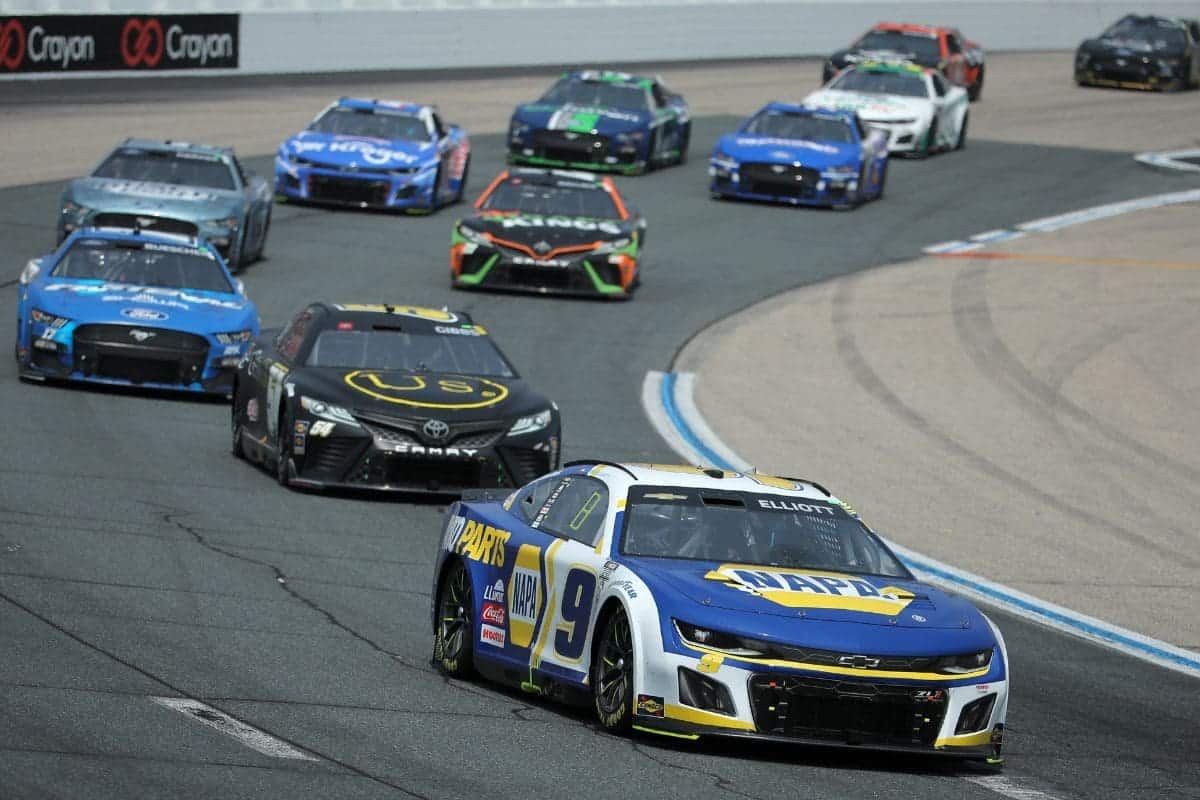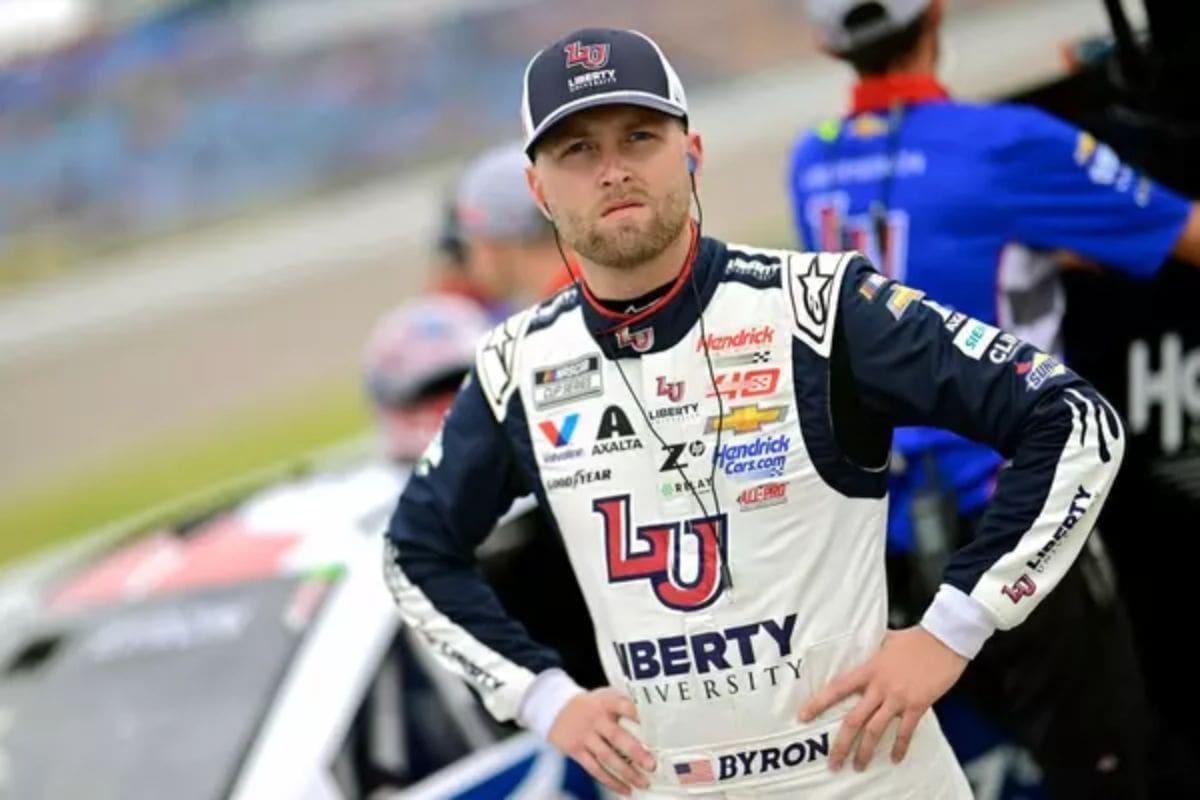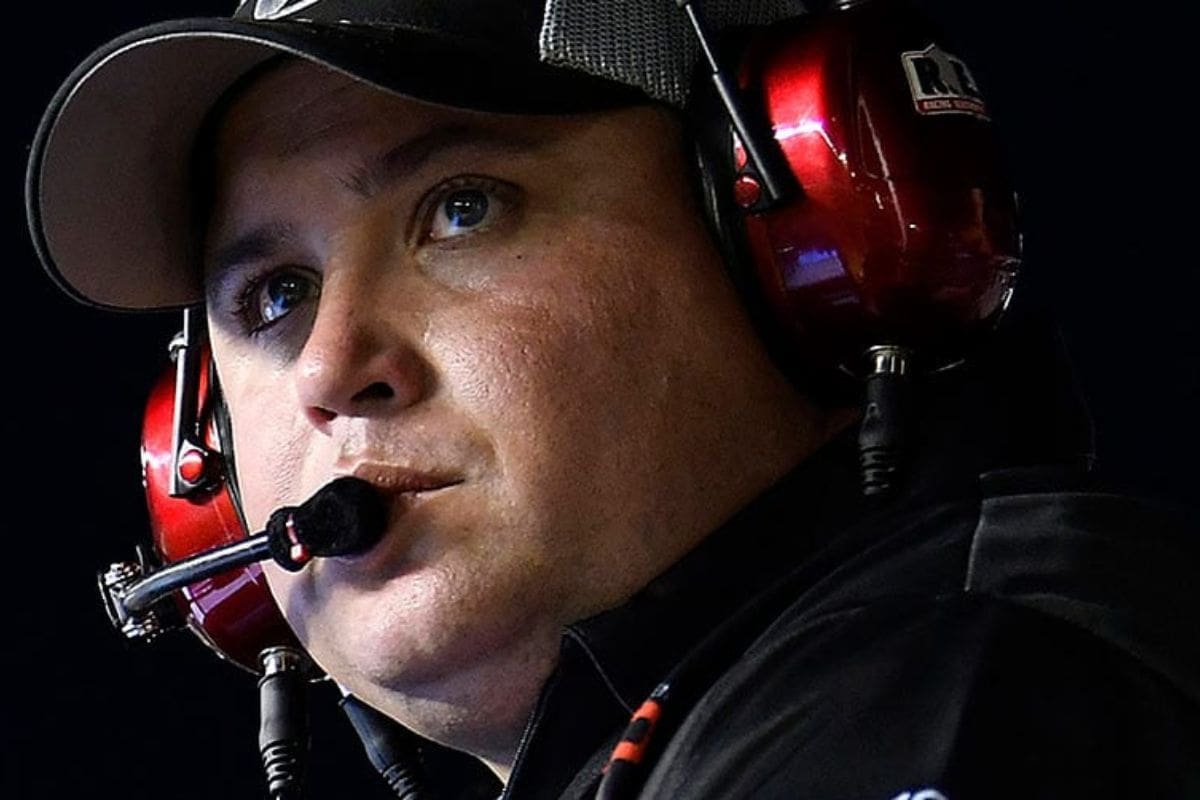NASCAR’s Rain Delay Decision: NASCAR’s decision to enforce a nearly two-hour rain delay at New Hampshire Motor Speedway ignited significant controversy. Officials cited track safety, visibility, and participant well-being as reasons for the halt. However, the examination and necessity of the decision have been widely debated. William Byron and his team, facing mechanical issues and strategic dilemmas, exemplified the challenges incurred under such unpredictable conditions. Crew chief Rudy Fugle called for greater strategy autonomy, specifically in tire decisions. NASCAR maintained that safety and race integrity were paramount, stressing ongoing refinement of their weather-related protocols.
Key Highlights
- NASCAR’s decision to halt the race due to sudden rainfall and lightning led to major controversy over timing and necessity.
- The nearly two-hour rain delay during the final stage drew mixed reactions from teams and fans.
- Teams were required to use wet weather tires, which sparked debates about strategic autonomy and race integrity.
- Crew chief Rudy Fugle called for more team autonomy in tire strategy decisions to better handle damp race conditions.
- NASCAR defended their wet weather tire policies, emphasizing safety, prompt resumption, and minimizing disruptions.
Race Interruption Due to Weather
In the midst of the final stage of last weekend’s Cup race in New Hampshire, NASCAR officials were compelled to wave the red flags due to an abrupt onset of rainfall and nearby lightning, leading to a substantial pause in the competition. The unexpected weather conditions disrupted the rhythm of the race, creating a scenario that required immediate and decisive action from the governing body to guarantee the safety of the drivers and crews.
The decision to neutralize the race at that point was not made lightly. NASCAR’s protocol for inclement weather involves multiple considerations, including track conditions, visibility, and the proximity of lightning strikes. The safety of all participants is paramount, and in this instance, rain and lightning posed an undeniable threat.
However, the interruption sparked controversy and debate within the racing community. Rick Hendrick’s employee, Rudy Fugle, openly questioned the timing and necessity of the red flag. Fugle’s concerns likely stemmed from the strategic implications such pauses have on race outcomes. When a race is halted, teams must reassess their strategies, which can greatly alter the competitive landscape.
Challenging Day for William Byron
William Byron’s day at New Hampshire Motor Speedway was plagued by a confluence of challenges, resulting in a disappointing P26 finish for the #24 car. The series of setbacks began early on, with changeable weather conditions making it difficult for the team to implement a consistent race strategy. The shifting environment required frequent adjustments, leading to a series of less-than-optimal tire and fuel decisions.
The crew chief, who endured a particularly rough day, struggled to find the right balance between aggressive and cautious tactics. The unpredictable weather compounded this complexity, with rain showers intermittently disrupting the race and forcing unscheduled pit stops. These unscheduled stops contributed to Byron losing valuable track position, further aggravating an already difficult situation.
Moreover, the #24 car faced mechanical issues that hindered its performance. Despite the team’s best efforts to address these problems during pit stops, the car’s handling remained subpar throughout the race. This mechanical struggle added difficulty for Byron, making it nearly impossible to regain lost ground.
In addition to mechanical and strategic challenges, Byron also contended with the psychological toll of a frustrating race day. The continuous setbacks impacted his focus and morale, complicating his ability to execute precision driving under increasingly adverse conditions.
NASCAR’s Handling of the Weather Conditions
NASCAR’s management of the weather conditions during the rain-soaked race at New Hampshire Motor Speedway has ignited significant controversy among teams and drivers, highlighting the complexities and contentious nature of officiating in adverse weather. The nearly two-hour and 15-minute rain delay during the final stage had profound implications for race strategy, tire choice, and the race dynamics.
NASCAR mandated that teams complete the remaining 77 competitive laps on wet weather tires, a decision that was met with mixed reactions. Twice under caution, NASCAR permitted non-competitive pit stops for new sets of wet tires, emphasizing their belief that the track conditions were unsuitable for a switch to slick tires. This decision emphasized NASCAR’s commitment to safety, but it also sparked frustration among many teams who felt the track had dried sufficiently for slicks.
USA Today 301 race winner Christopher Bell was particularly satisfied with NASCAR’s officiating, indicating that some level of agreement existed regarding the safety measures. However, this sentiment was not universally shared. The majority of the grid expressed discontent, suggesting that NASCAR’s assessment of track conditions may have been overly cautious. This difference in opinions highlights the inherent challenge in making real-time decisions that balance safety, competitive integrity, and race excitement.
Rudy Fugle’s Perspective on Race Strategy
The controversy surrounding NASCAR’s weather management at NHMS also brought forward critical insights from Rudy Fugle, who emphasized the need for greater team autonomy in tire strategy decisions. Fugle, the crew chief for the #24 team, articulated his stance during an interview with SiriusXM NASCAR Radio, where he highlighted the complexities and potential improvements in race management during inclement weather.
“I do think you’re going to have to have the sanctioning body call it, ‘Hey this is an official wet race. We are going back.’ There are a couple of things that we’re going to have to decide on. You’ll get yourself in situations where we won’t know. you know what.” – (Fugle)
“Because, yesterday, we could have called, ‘Hey this is a damp race, you can come put rains on,’ well before the lightning came. We knew there was a window there where we could have ran another 20 minutes or so before the lightning came. where the track was wet. You’ll get that situation, where the lightning’s coming, they know it and we don’t.” – (Fugle)
Fugle believes that teams should have more control over their tire choices and race strategy, especially in situations where the weather conditions are variable. He pointed out that NASCAR could have declared the race a ‘damp race,’ allowing teams to switch to rain tires well before the onset of lightning. According to Fugle, this window of opportunity could have permitted an additional 20 minutes of racing, maximizing track time before the weather became too severe.
View this post on Instagram
The crew chief emphasized that while the sanctioning body must officially declare weather conditions, such as a wet race, there should be more transparency and communication regarding impending weather changes. Fugle’s argument depends on the premise that race teams, equipped with real-time data and strategic insight, could make more informed decisions if given the autonomy to manage their tire strategy under evolving conditions. This autonomy, he suggested, might have allowed for a more competitive and dynamic race environment, even in the face of unpredictable weather.
Fugle’s perspective sheds light on a broader debate within NASCAR about the balance between centralized control and team independence. His call for increased strategic freedom is rooted in the belief that such measures could lead to better race outcomes and overall satisfaction among teams and fans equally.
NASCAR’s Viewpoint and Looking Forward
In response to the weather-related controversy at NHMS, NASCAR officials have defended their strategies and highlighted the benefits of their wet weather tire policies, emphasizing their commitment to minimizing delays and guaranteeing race continuity. Elton Sawyer, NASCAR’s senior vice president of competition, elaborated on the organization’s approach, stressing that the primary objective was to initiate races on time and to promptly resume them after delays. Sawyer pointed out that these policies proved effective, particularly in the case of the Xfinity race, which started as scheduled despite adverse weather conditions.
“I think what we the way we started this whole wet weather tire process was basically we wanted to get our races started on time and it really played into our hand (Saturday) to get the Xfinity race started on time and to get our races back to green as quick as possible if we had a delay like today.” – (Sawyer)
According to Sawyer, the introduction of wet weather tires is designed to address precisely the kind of scenario observed at NHMS. The aim is to reduce downtime and improve the overall race experience for all the drivers and fans. NASCAR believes that by having these policies in place, they can uphold the excitement and integrity of the sport, even under challenging weather conditions.
Looking forward, NASCAR plans to continue refining their approach to inclement weather, taking into account feedback from teams and drivers. While crew chief Rudy Fugle has called for more proactive measures and increased flexibility in tire strategies, NASCAR insists that their current protocols are a significant step forward in managing weather-related disruptions.
The organization acknowledges that continuous improvement is key. Future discussions will likely focus on how to balance the need for quick decision-making with the diverse needs of teams and drivers. As NASCAR evaluates the outcomes of recent races, they remain committed to fine-tuning their strategies to guarantee fair competition and enriched race experiences, thus keeping the sport dynamic and resilient in the face of weather-related challenges.
News in Brief: NASCAR’s Rain Delay Decision
The controversy surrounding NASCAR’s rain delay decisions at New Hampshire Motor Speedway highlights the complexities of race management under adverse weather conditions.
The challenges faced by William Byron and the #24 car, alongside strategic insights from Rudy Fugle, highlight the intricate balance between competitive fairness and safety.
NASCAR’s approach and future considerations will be crucial in shaping race protocols, ensuring driver safety and the integrity of the sport remain paramount.
Our Reader’s Queries
Q. What happens if it rains during a NASCAR race?
A. If rain starts during a race, it will be paused until the precipitation stops and the track is dried. A brief shower might only cause a short delay, but prolonged, heavy rain could suspend the race for several hours or even until the next day.
Q. Why does NASCAR not race in the rain?
A. NASCAR’s rain tires are designed for use on a damp track, not when there’s significant spray coming off the cars. As the track dries, these wet-weather tires heat up and wear out more quickly.
ALSO READ: NASCAR Ready to Cut Ties With Tire Business After Elliott’s Outburst



